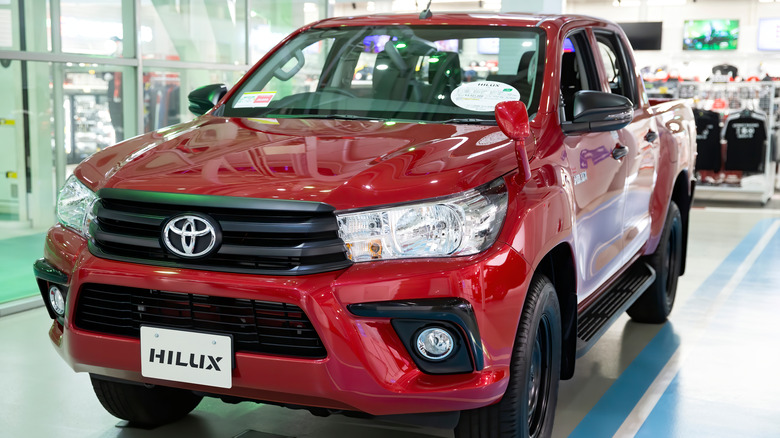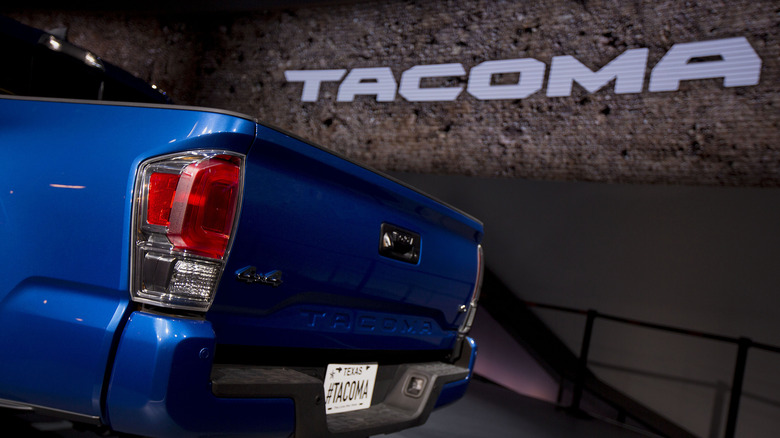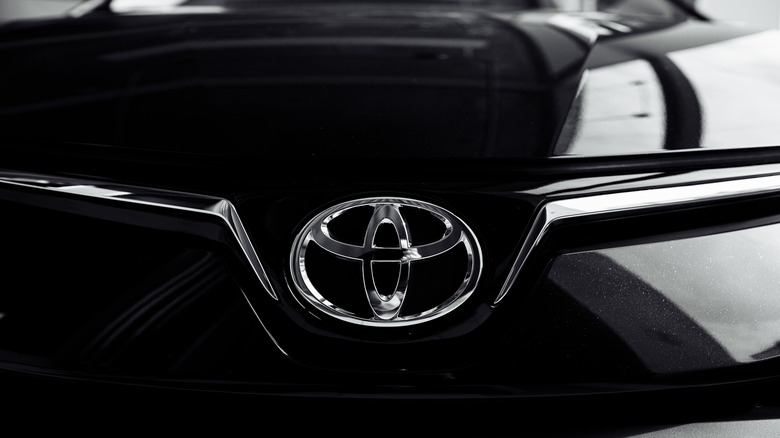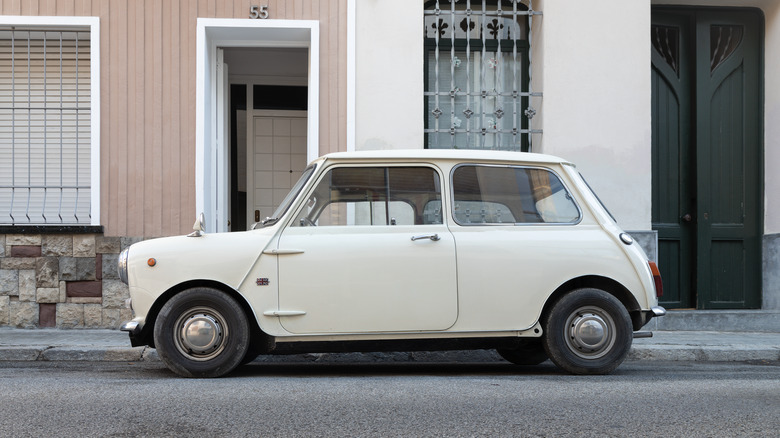Why America Banned The Toyota Hilux
The Toyota Hilux was one of the first trucks produced by the company. It launched in the Japanese market in 1968 and soon arrived on American shores just a year later (via Toyota). The Hilux was designed to replace older and less comfortable truck models and open up Toyota to a unique niche in the pickup truck space. Up to this point, many trucks were designed to be functional work vehicles and lacked some of the trappings of comfort that consumers were looking for in a personal automotive investment. Trucks remained a tool for farming, construction, manufacturing, and other labor industry segments. People who drove trucks did so because the vehicle served a specific purpose in their daily life.
Today, this couldn't be farther from reality. The pickup truck has become immensely comfortable and is a popular option for drivers all across the country (ABC News notes that it is often thought of as a status symbol). Regardless of your profession, hobbies, and lifestyle, a pickup truck from Toyota or any other brand is a great choice that can facilitate your daily commute and other driving needs. The Hilux started this trend by making the passenger cabin larger and more comfortable, improving roadworthiness and bracing for a smoother ride, and modernizing the aesthetic of the vehicle.
It's because of these changes to the truck marketplace that the withdrawal of the Toyota Hilux from North American markets in the '90s is particularly surprising. Here's the reason why you'd be hard-pressed to find a Toyota Hilux on American roads.
A shift to the Toyota Tacoma
While the Hilux isn't necessarily banned in the United States, the vehicle was essentially replaced by the Toyota Tacoma in 1995 (via CoverKing). The Tacoma took over where the Hilux had left off. The truck provides a significant tool capacity and storage bed behind the cabin, and a large passenger area to accommodate the driver and multiple other travelers.
Retail News Asia reports that the Hilux is no longer sold in Vietnam as a result of a lack of Euro 5 diesel, and this somewhat mirrors the decision to pull the truck from the North American market more than 20 years ago due to emissions and safety standards concerns (per Hot Cars). This model is still built and shipped all around the world, but because no Toyota Hilux trucks are built in the United States, another important feature plays a role: Importing one would cost the buyer an additional 25% as a result of an imposed tariff known as the chicken tax (via Investopedia). This makes the Hilux an expensive vehicle to own for an American driver, and with the Toyota Tacoma providing what amounts to the same kind of experience, there really is no benefit to purchasing and importing this vehicle unless there is a substantial sentimental attachment to the particular car.
Toyota remains an important car manufacturer for the American market, and the Toyota Tacoma is a best-selling pickup that provides a comfortable driving experience, meets excellent safety standards, and can haul significant loads either with a tow package or in the truck bed.
Toyota in America
Toyota is a Japanese automotive giant, and in the modern world, it has become this behemoth primarily as a result of a unique innovation in the manufacturing process. Kiichiro Toyoda, the company's founder's son, had traveled to the United States and England to learn about efficient manufacturing (via Automotive Hall of Fame). The system they developed is known today as lean manufacturing and has been implemented by product teams across industries and the world, according to RCBI at Marshall University. Lean manufacturing aims to reduce or eliminate waste in all aspects of the manufacturing process for any particular product.
This commitment to waste reduction made Toyota an industry leader in the production of new vehicles for the global marketplace. Today, Toyota is a much-loved truck and car brand in the United States and beyond. The Hilux may have disappeared from North America in 1995, but this hasn't been the only change to take place in recent years with Toyota automobiles.
More recently, Toyota has unveiled plans to ramp up electric vehicle production and will invest around $70 billion in companywide changes to improve and expand Toyota brand EVs over the coming years (via CNBC).
Some iconic cars have stricter bans than the Hilux
While the Toyota Hilux might be difficult to find in the United States, other cars are near impossible to get — even if you can afford to import them. The Imported Vehicle Safety Compliance Act (IVSCA) has seen many iconic vehicles including the Land Rover Defender, Mini Cooper, and Nissan Skyline GTR banned from the country. The act essentially banned the import of all vehicles that weren't available for sale in the United States. While vehicles could still technically be brought into the country, they could not legally be registered or driven on public roads.
The act is still in place, but many of the classics it once banned are available because of a certain clause in the legislation. Vehicles over 25 years old are considered classics and can be imported without falling foul of IVSCA. There is another loophole that could be used to get newer vehicles that have been banned. If the car is imported as a "show and display" vehicle, it can be driven on public roads. However, you have to get clearance from the National Highway Traffic Safety Administration first, and even if you manage that you won't be allowed to do more than 2,500 miles per year in your new pride and joy. There have been strong calls to abolish the IVSCA, with critics pointing out how it is legal to import something like a classic mini, but illegal to import some newer, far safer models. There was also a push to make vehicles older than 15 years available for import, instead of the current 25. All attempts have so far failed, and the U.S. remains a difficult place to get hold of some classics.



